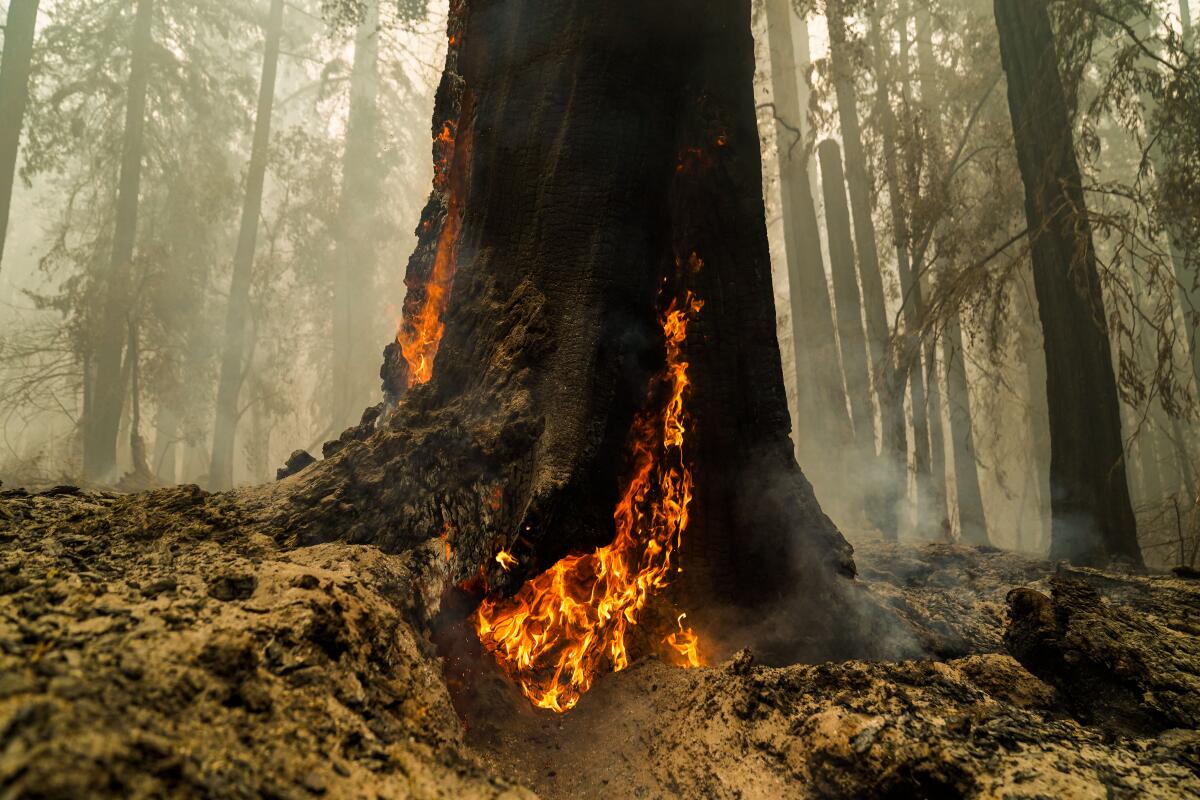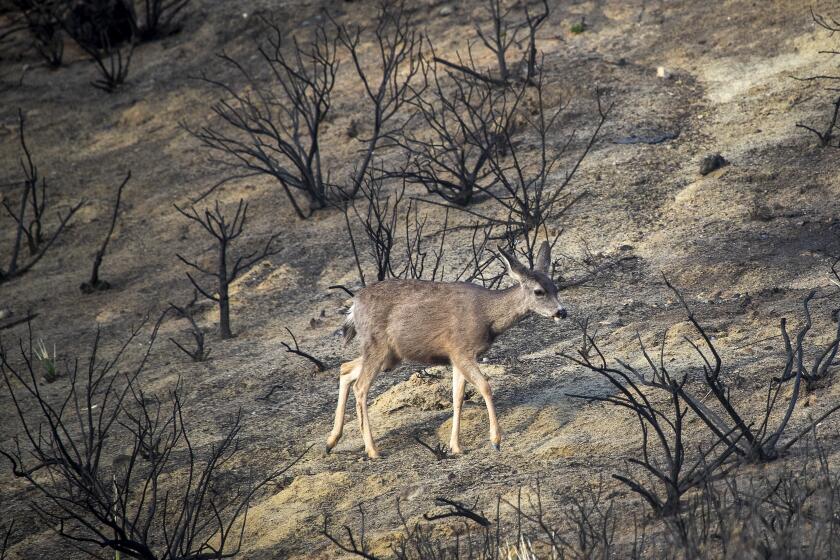Forecasting California’s fire season: What we know and don’t know

Forecasters look at many factors when they’re predicting how active a fire season might be, said Nick Nauslar, fire meteorologist at the National Interagency Fire Center in Boise, Idaho.
“When we’re looking at creating our monthly and seasonal forecasts, we’re looking at where there are areas of drought,” he said. “And then in the shorter term, are we going to see weather conducive for fire ignition and spread?”
Here are points taken into consideration when forecasting a fire season:
- Long-term drought: Drought cures vegetation and soils, priming the landscape to burn.
- Short-term drought: Spring rain can delay the start of the fire season, but in some lower-elevation areas, it can also feed the growth of vegetation that will dry out and fuel fires later in the summer.
- Climate: Hot, dry conditions and — in particular — intense heat waves have been linked to more active fire seasons.
- Weather: Meteorologists consider both long- and short-range weather forecasts when predicting whether conditions will be conducive to fires starting and spreading rapidly. Lightning storms spark fires, and dry and windy conditions can further promote rapid fire spread. So can atmospheric instability, which results when warm air near the surface meets cooler air aloft and can allow fires to develop massive plumes that create their own weather.
- Human behavior: Humans are responsible for the majority of fire ignitions, Nauslar said. Although their behavior is impossible to predict, fire managers tend to see an uptick in fire starts on weekends, especially holiday weekends, he said.
Right now, Nauslar said, California’s mountains and foothills are projected to see “above normal significant fire potential” starting in July and maybe even June. But there are a couple of key variables that haven’t yet taken shape.
Here’s what we know heading into this fire season:
- California is in a long-term drought, and vegetation and soils are very dry.
- The water content of the Sierra snowpack, which is the state’s largest naturally occurring reservoir, has dwindled to 28% of normal for this time of year.
- Forecasters expect the region will remain largely dry through June.
- Temperatures are expected to be above normal this summer.
Here’s what we don’t know yet:
- Will there be an above-normal incidence of lightning and wind events that spark fires and drive their spread?
- Will tropical-storm remnants traveling up the coast or other weather systems create instability in the atmosphere that can also result in lightning and nurture rapid fire spread?
- How many fires will be started by accidents, arson, downed power lines or other human causes, and how large will they grow?
Climate, weather, human behavior and even luck will dictate whether the 2021 wildfire season goes down in the record books like 2020.
Unfortunately, experts say, several factors are helping to elevate California’s significant wildfire risk as time goes on. Here’s how climate change and other shifts in human activity are helping predispose the state to more-damaging fire seasons:
- Hotter, drier conditions — with more intense periods of precipitation and longer dry spells between them — means vegetation is primed to burn.
- There’s some evidence that climate change is increasing the incidence of lightning as the atmosphere becomes hotter at the surface and less stable, boosting the risk of thunderstorms.
- Drought-stressed trees are vulnerable to fatal bark beetle infestations, and the resulting stands of dead fuel that accumulate in forests can make fires burn hotter and spread more rapidly.
- Rising temperatures mean more precipitation is falling as rain rather than as snow, and the snowpack is melting earlier in the year, leading to fire seasons that start sooner and last longer.
- More humans are moving into previously unpopulated wildland areas, increasing the likelihood that they will start fires in these areas and that the resulting fires will threaten people and their homes.
More to Read
Sign up for Essential California
The most important California stories and recommendations in your inbox every morning.
You may occasionally receive promotional content from the Los Angeles Times.












